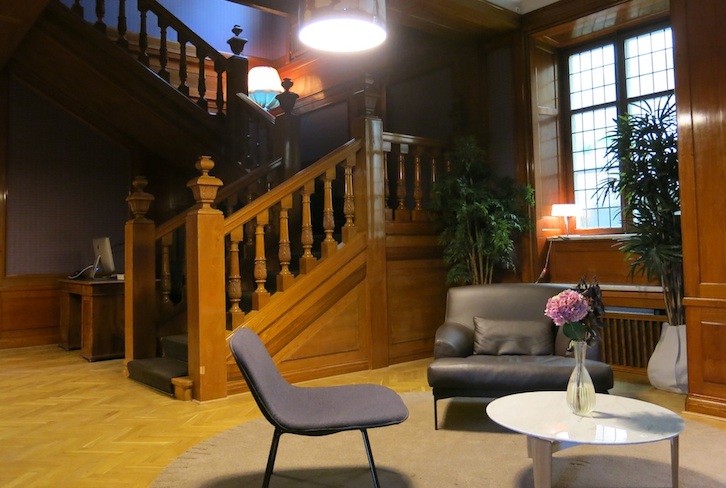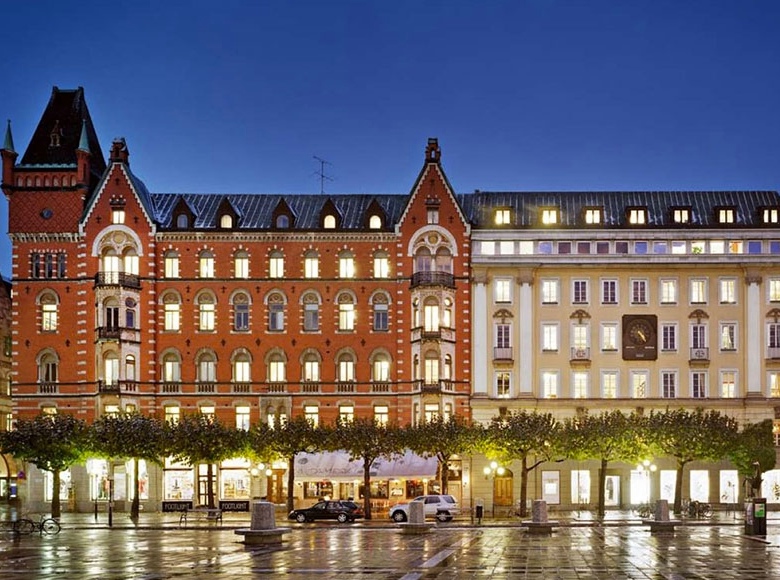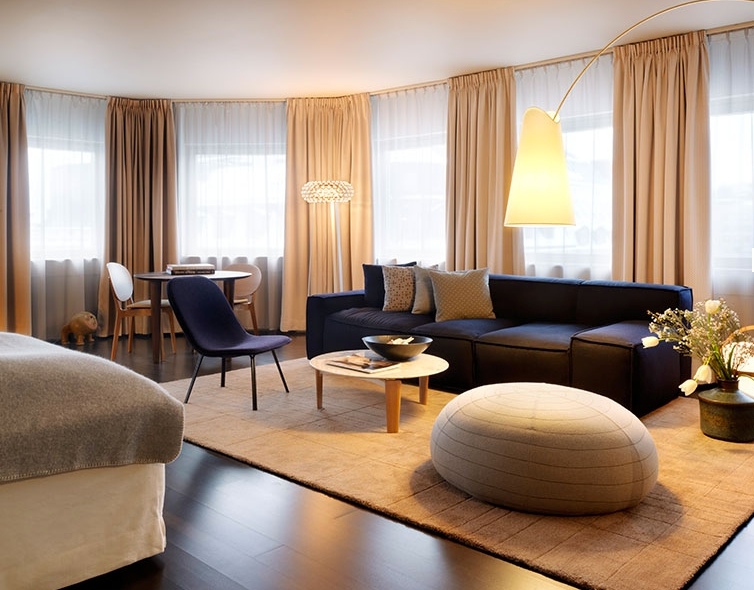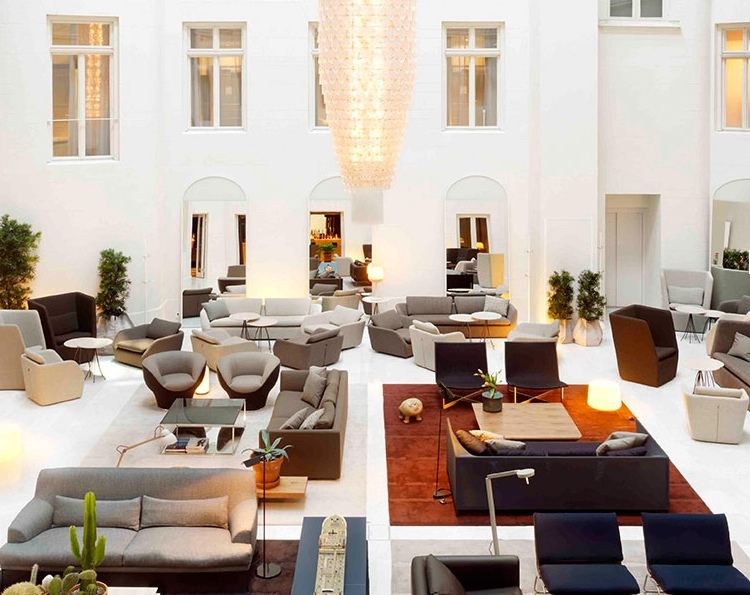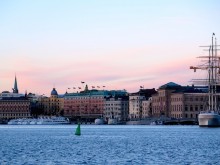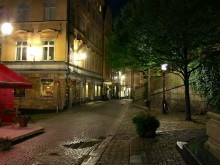This is where it happened: forty years ago in the summer of 1973, this is where the term “Stockholm syndrome” derived after bank employees were held hostage for six days in a bank vault during an attempted robbery.
O tempora o mores! as Cicero would’ve declaimed back then – and how things have changed on Norrmalmstorg Square in the forty years hence.
What was originally the private residence of an industrial magnate and later the locale of several legendary restaurants before becoming the bank on the nightly world news is now the home of Nobis Hotel.
Located on Norrmalmstorg Square, which is the most expensive lot in the Swedish edition of Monopoly, in one of Stockholm’s most prominent neighborhoods, Nobis Hotel is housed in two adjacent late 19th-century buildings: the former bank and a neighboring apartment building originally built for affluent Stockholmers, which once contained an apartment of 22 rooms, plus servants’ quarters.
A member of Design Hotels and the Nobis Group, which includes Hotel Skeppsholmen and Hotel J among others, Nobis Hotel was designed by the world-renowned architect and design studio Claesson Koivisto Rune, whose clients include Cappellini, Iittala, and Boffi, and who are widely celebrated for the Sfera building in Kyoto, Japan.
As light and lovely as Stockholm is in the summer, the city in winter is mesmerizing beneath a blanket of white and a hibernal sky. In winter is when Stockholm’s fabled hospitality moves indoors. “From the beginning, we’ve been inspired by the appearance of Stockholm in the wintertime, when the light is softer and contrasts lower,” says designer Ola Rune. “It’s only when you look closer that you see the subtle muffled colors and soft shadows.”
Opened in late 2010, the 201-room hotel is designed in a style that utilizes Scandinavian aesthetics and an understated palette of colors to create a contemporary atmosphere marked by timeless elegance. “In the furniture and interiors, we’ve selected mainly natural materials that will age with grace – wools, wood, stone, leather, and glass,” says Rune. “The rooms are luxurious in an honest, no-nonsense way. The sense of luxury comes from comfort and function, and a cool, sophisticated ambiance, without excesses.” Consider also that the flagship store of Swedish fashion label Acne is located on the hotel’s ground floor, as is Marimekko.
Superior rooms at Nobis Hotel average around 275 square feet and feature Egyptian cotton linens and Carrara marble bathrooms. Armchairs and desks and chairs are sleek and elegant – and exactly the sort of furnishings you might yearn for in your own home, which is precisely the point. As Mårten Claesson has remarked, “In the rooms, and in the rest of the hotel, we worked at creating interiors of the kind that you would encounter in a private home, assembled over a longer period of time. It sounds simple, but it takes a lot of care and effort, carefully selecting products from different manufacturers and designers, instead of many products from the same brand which give that “corporate” feel that we’re trying to avoid.”
Nobis Hotel guests have free access to the fitness center and sauna, as well as free high-speed wireless throughout the hotel, 24-hour concierge and room service, and a multimedia system with a library of complimentary films and music.
The Lounge at Nobis Hotel has become Stockholm’s de facto living room, a watering hole for locals with a spectacular courtyard and a ceiling height that soars to nearly 100 feet. Furnished as four separate living rooms, The Lounge is particularly inviting in inclement weather, as is the adjoining Gold Bar with its yellow onyx bar. Winner of Sweden’s best bar award in 2011, The Gold Bar features signature cocktails from legendary hotels and gentlemen’s clubs mixed by a team of resident mixologists.
Dining options at Nobis include The Bistro, an Italian enoteca located off the lobby, and Caina Restaurant, which also serves as the hotel’s breakfast room and which is where you might best appreciate the calm and relaxing atmosphere created by the hotel’s designers.
The frenzy for New Nordic cuisine has swept the globe – and with good reason. Breakfast at Nobis Hotel is based on home-baked goods and organic produce from local farmers and purveyors. As Chef Stefano Catenacci states, “In recent years Sweden has been recognized as one of the great culinary nations in the world. This is thanks to all the small-scale farmers and producers here in Sweden. The fact is that Sweden has never tasted better [and] Swedish breakfast is a tradition that I have fallen in love with.” The sumptuous buffet includes organic oatmeal, milk, yogurt, cheeses, sausages and ham, honey, and house-made muesli.
After breakfast, work off some of those calories with a leisurely walk up one of the Nobis Hotel‘s original stately staircases: one of marble and the other of polished wood. Pause on the landings and consider all those who have walked these steps before you – and those who will follow.
Back upstairs in your room, as you gaze from your window at the people strolling across Stockholm‘s most prestigious square, the sun glinting off NK‘s revolving neon sign as the trams come and go, it’s possible that you’ll think again of a time when the city was viewed as utopian and urban design celebrated as a path to the remarkable and extraordinary. A respite at Nobis Hotel reminds you of the promises of the city.

